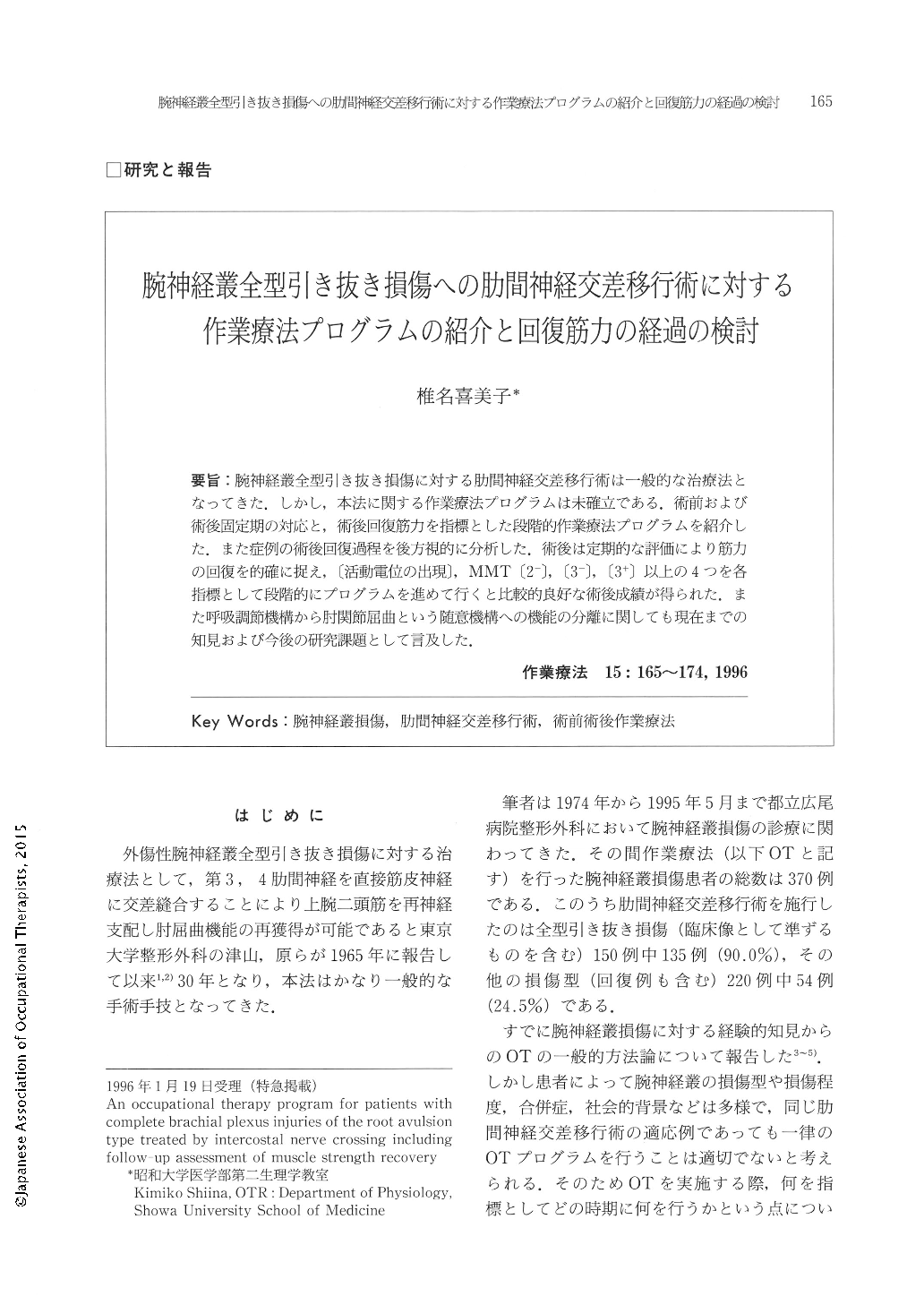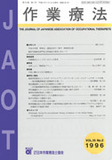Japanese
English
- 販売していません
- Abstract 文献概要
- 1ページ目 Look Inside
- 参考文献 Reference
- サイト内被引用 Cited by
要旨:腕神経叢全型引き抜き損傷に対する肋間神経交差移行術は一般的な治療法となってきた.しかし,本法に関する作業療法プログラムは未確立である.術前および術後固定期の対応と,術後回復筋力を指標とした段階的作業療法プログラムを紹介した.また症例の術後回復過程を後方視的に分析した.術後は定期的な評価により筋力の回復を的確に捉え,〔活動電位の出現〕,MMT〔2-〕,〔3-〕,〔3+〕以上の4つを各指標として段階的にプログラムを進めて行くと比較的良好な術後成績が得られた.また呼吸調節機構から肘関節屈曲という随意機構への機能の分離に関しても現在までの知見および今後の研究課題として言及した.
Intercostal nerve crossing has become a generally accepted form of surgical treatment for complete brachial plexus injuries of the root avulsion type. However, occupational therapy programs coordinated to this technique have not yet been established. A step-by-step occupational therapy program designed to : 1. meet the needs of the preoperative patient; 2. provide support during the period of postoperative fixation; and, 3. improve muscular strength postoperatively, is presented. In addition to this program, the postoperative recovery process is analyzed retrospectively. Postoperatively, regular assessment of muscle strength allows the therapist to follow the recovery in muscle strength that occurs. By creating a program based on regular assessment, for example using the presence of action potentials, MMT (2-), (3+), and (3+) as four markers by which to assess progress, relatively good postoperative recovery can be obtained. Mention is made of the knowledge available to date on the functional dissociation that must be achieved to allow structures regulating respiration to be used for initiation of elbow flexion and other topics of research interest. The author has accumulated 370 cases of brachial plexus injuries over a 20 year period form 1974-1995. Of the 150 with complete brachial plexus injuries of the root avulsion type, 135 had intercostal nerve crossing performed. 54 of the remaining 220 had intercostal nerve crossing. Five factors affect the success of this surgery : age, length of the period from injury to surgery, how well the intercostal nerves can be freed, the length of the intercostal nerves and the effectiveness of re-education and training postoperatively. 39 subjects were used to assess the appropriateness of this step-by-step occupational therapy program.

Copyright © 1996, Japanese Association of Occupational Therapists. All rights reserved.


